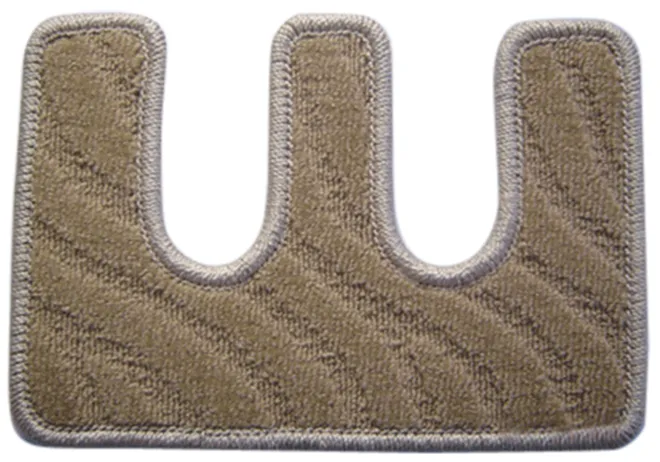how to use double needle sewing machine
How to Use a Double Needle Sewing Machine
Sewing is an art that has evolved with technology, making it easier and more efficient for enthusiasts and professionals alike. One of the most fascinating tools in a sewer's arsenal is the double needle sewing machine. This specialized machine is perfect for creating parallel rows of stitching, adding unique decorative elements, and sewing hems with a professional finish. If you've ever wondered how to use a double needle sewing machine effectively, read on for a comprehensive guide that covers everything you need to know.
Understanding the Double Needle
Before you start sewing, it's crucial to understand what a double needle is. A double needle sewing machine uses two needles simultaneously, which allows you to sew two lines of stitching at the same time. These needles are connected to a single needle bar, and they share the same bobbin thread but have separate top threads. This feature enables you to create beautiful designs with ease, making it a favorite among quilters and garment makers.
Preparing Your Machine
1. Choose the Right Double Needle Double needles come in various sizes and types. For standard sewing, a size 80/12 or 90/14 is appropriate. If you're sewing with stretch fabrics, opt for a ballpoint double needle. Remember that the distance between the needles can vary. Common spacings are 2mm, 3mm, and 4mm.
2. Threading the Machine Threading a double needle is slightly more complicated than threading a single needle. Start by placing your thread on the spool holder and draw the thread through the tension discs. When you reach the needle section, you'll need to split the thread between the two needles. This means you should thread each needle individually while ensuring both threads pass through the tension system correctly.
3. Adjust the Tension A double needle sewing machine often requires a different thread tension than a single needle machine. Before you start sewing, test the tension on a scrap piece of fabric. Adjust the top thread tension as necessary, aiming for balanced stitches that do not pucker or sag.
Setting Up to Sew
1. Choose Your Fabric Not all fabrics are suitable for double needle sewing. Lightweight knits, wovens, or denim are good candidates. Avoid thick materials, as they may not feed evenly through the machine.
2. Select the Stitch Type The double needle works well with numerous stitch types, including straight stitches and zigzag stitches. However, a straight stitch is the most common choice. Check your machine's manual to ensure compatibility with double needles.
how to use double needle sewing machine

3. Fabric Placement Place your fabric beneath the presser foot, ensuring it is aligned properly. It's often beneficial to use a guide or ruler to maintain even spacing between your stitches.
Sewing Techniques
1. Begin with a Test Run Before you dive into your project, take a few minutes to practice on scrap fabric. This test will help you get accustomed to the feel of the machine and see how the threading and tension work together.
2. Sewing Straight Lines As you sew, focus on maintaining a steady pace. The double needle can be surprisingly quick, so controlling the speed is essential. Use the built-in guide or edge of your fabric to keep your lines straight.
3. Hemming with a Double Needle For hems, fold the fabric edge and pin it in place. Sew along the fold, making sure to keep the pins out of the way as you approach them. The result will be two parallel lines of stitching on the outside of your garment, creating a polished look.
4. Creative Projects Once you’re comfortable with the basics, experiment with different fabrics and stitch lengths. You can create decorative elements on quilts, embellish t-shirts, or add detail to bags and accessories.
Maintenance
After using your double needle sewing machine, it's essential to clean it regularly. Remove lint and dust from the bobbin area and threads. Check that the needles are not damaged, and always replace them when they become dull or bent.
Conclusion
A double needle sewing machine opens a world of creative possibilities for sewists. By understanding how to set up your machine, adjust tensions, and sew with precision, you can take your sewing projects to the next level. With practice and experimentation, you’ll soon harness the power of the double needle to create stunning and professional-looking finishes that will impress everyone. Happy sewing!
-
Boost Production Efficiency with a Pattern Sewing MachineNewsAug.29,2025
-
Industrial Excellence with the Best Heavy Duty Sewing MachineNewsAug.29,2025
-
Precision and Power with the Best Pattern Sewing MachineNewsAug.29,2025
-
Reliable Bulk Packaging Starts With the Right FIBC Sewing MachineNewsAug.29,2025
-
Advanced Packaging Solutions: Elevate Productivity with Jumbo Bag Sewing Machine and Industrial Stitching EquipmentNewsAug.29,2025
-
High-Performance Solutions for Bulk Packaging: FIBC Sewing Machine and MoreNewsAug.29,2025
-
Maximize Efficiency with an Industrial Cylinder Arm Sewing MachineNewsAug.28,2025


























